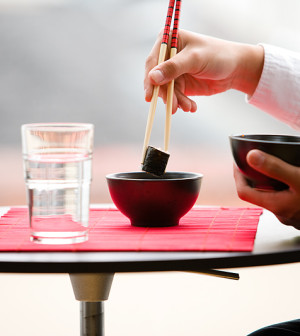- Navigating Your Midlife Crisis: Embracing New Possibilities
- City Raccoons Showing Signs of Domestication
- Mapping the Exposome: Science Broadens Focus to Environmental Disease Triggers
- One Week Less on Social Media Linked to Better Mental Health
- Your Brain Changes in Stages as You Age, Study Finds
- Some Suicide Victims Show No Typical Warning Signs, Study Finds
- ByHeart Formula Faces Lawsuits After Babies Sickened With Botulism
- Switch to Vegan Diet Could Cut Your Greenhouse Gas Emissions in Half
- Regular Bedtime Does Wonders for Blood Pressure
- Dining Alone Could Mean Worse Nutrition for Seniors
Expert Offers Advice on Treating Corns, Calluses

Corns and calluses form due to friction or pressure on the skin, and there are a number of ways to treat these often unsightly areas, an expert says.
“Calluses can develop anywhere on the body where there is repeated friction, such as a guitar player’s fingertips or a mechanic’s palms,” said Dr. Nada Elbuluk, assistant professor of dermatology at NYU Langone Medical Center in New York City.
“Corns typically develop on the tops and sides of the toes, and on the balls of the feet, and common causes are arthritis or poorly fitting shoes,” she explained in an American Academy of Dermatology news release.
Elbuluk also noted that corns and calluses on the feet may be mistaken for plantar warts. But plantar warts have tiny black dots in them, which are actually small blood vessels. And, plantar warts are usually more painful when pressure is applied to the sides of the warts, she explained.
If corns and calluses are an issue for you, Elbuluk offered some tips for treating them.
You can soak your corn or callus in warm water for five to 10 minutes or until the skin softens, she suggested. Then, use a pumice stone to file the corn or callus. First dip the stone in warm water and then use circular or sideways motions to remove dead skin. Don’t remove too much skin because doing so could cause bleeding and infection, she advised.
Another approach is to apply moisturizing lotion or cream with salicylic acid, ammonium lactate, or urea to the area each day. This will help gradually soften corns and calluses, Elbuluk explained.
To prevent further irritation of calluses, cut a piece of moleskin into two half-moon shapes and place them around the callus. For corns, surround them with donut-shaped adhesive pads. These products are available at most drugstores.
Shoes that aren’t the right size or shape for your foot are a common cause of corns, Elbuluk noted. It’s best to shop for shoes at the end of the day, when your feet may be slightly swollen. Ask the clerk to measure your foot, and don’t buy shoes that are too loose or tight, she advised.
And keep your toenails trimmed, Elbuluk said. If they’re too long, toenails can force your toes up against your shoes, causing a corn to form.
“Most corns and calluses gradually go away when the friction or pressure causing them stops,” Elbuluk said in the news release.
But if you don’t know what caused your corn or callus, or if the hardened skin is very painful, Elbuluk recommended seeing a certified dermatologist, podiatrist or orthopedist. She said people who think they have warts, and people with diabetes, should also see a doctor for their corns and calluses.
More information
The American Podiatric Medical Association has more about corns and calluses.
Source: HealthDay
Copyright © 2025 HealthDay. All rights reserved.










